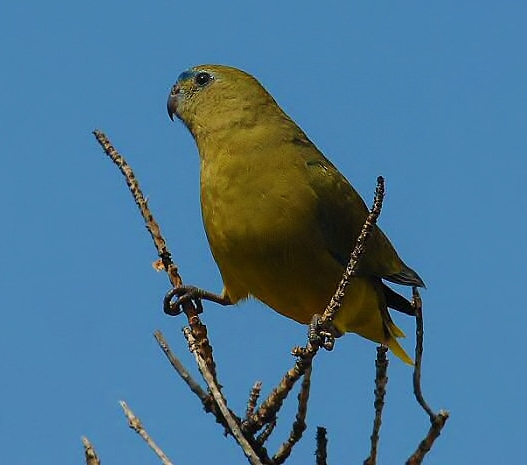 |
| Photo by Jean-Philippe Paris (Mango Verde) |
Common name:
rock parrot (en); piriquito-das-rochas (pt); perruche des rochers (fr); periquito roquero (es); klippensittich (de)
Taxonomy:
Order Psittaciformes
Family Psittacidae
Range:
This species is endemic to Australia, being found in coastal areas of South Australia and Western Australia, especially along the coast from Kingston to Ceduna in South Australia and in Western Australia from Cape Arid National Park to Geraldton.
Size:
These birds are22-24 cm long and weigh 45-65 g.
Habitat:
The rock parrot is mostly found in rocky coastal areas and rocky offshore islands, but also in coastal sand dunes, mangroves, saltmarshes, mudflats and occasionally in dry forests and scrublands near coastal areas. They are seldom seen more than a few hundred metres from the sea.
Diet:
They feed on the on seeds and fruits of a wide variety of grasses, rushes, scrubs and salt-tolerant plants, namely Carpobrotus.
Breeding:
Rock parrots breed in August-December. They nest on a rock crevice or ledge, tunnel or abandoned seabird nesting burrow, often hidden behind succulent scrubs. Most nests are on offshore islands. The female lays 4-5 eggs, which she incubates alone for 18 days while the male provides her food. The chicks fledge about 30 days after hatching.
Conservation:
IUCN status -LC (Least Concern)
This species has a relatively large breeding range and, although the global population size has not been quantified, the rock parrot is reported to be generally common. The population is suspected to be in decline owing to predation by invasive species, especially foxes, cats and rats, and human disturbance is also a problem near housing and recreational developments.







